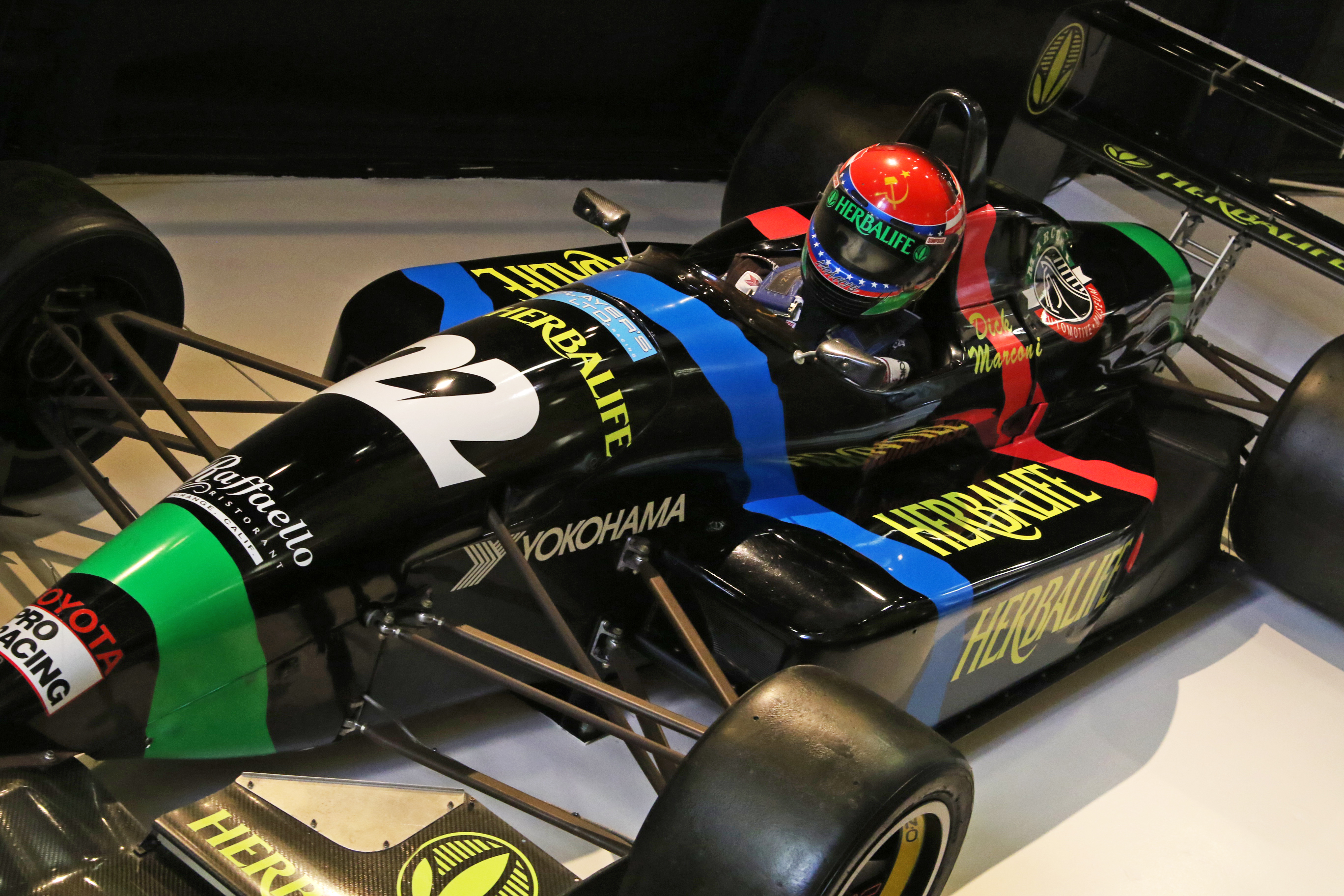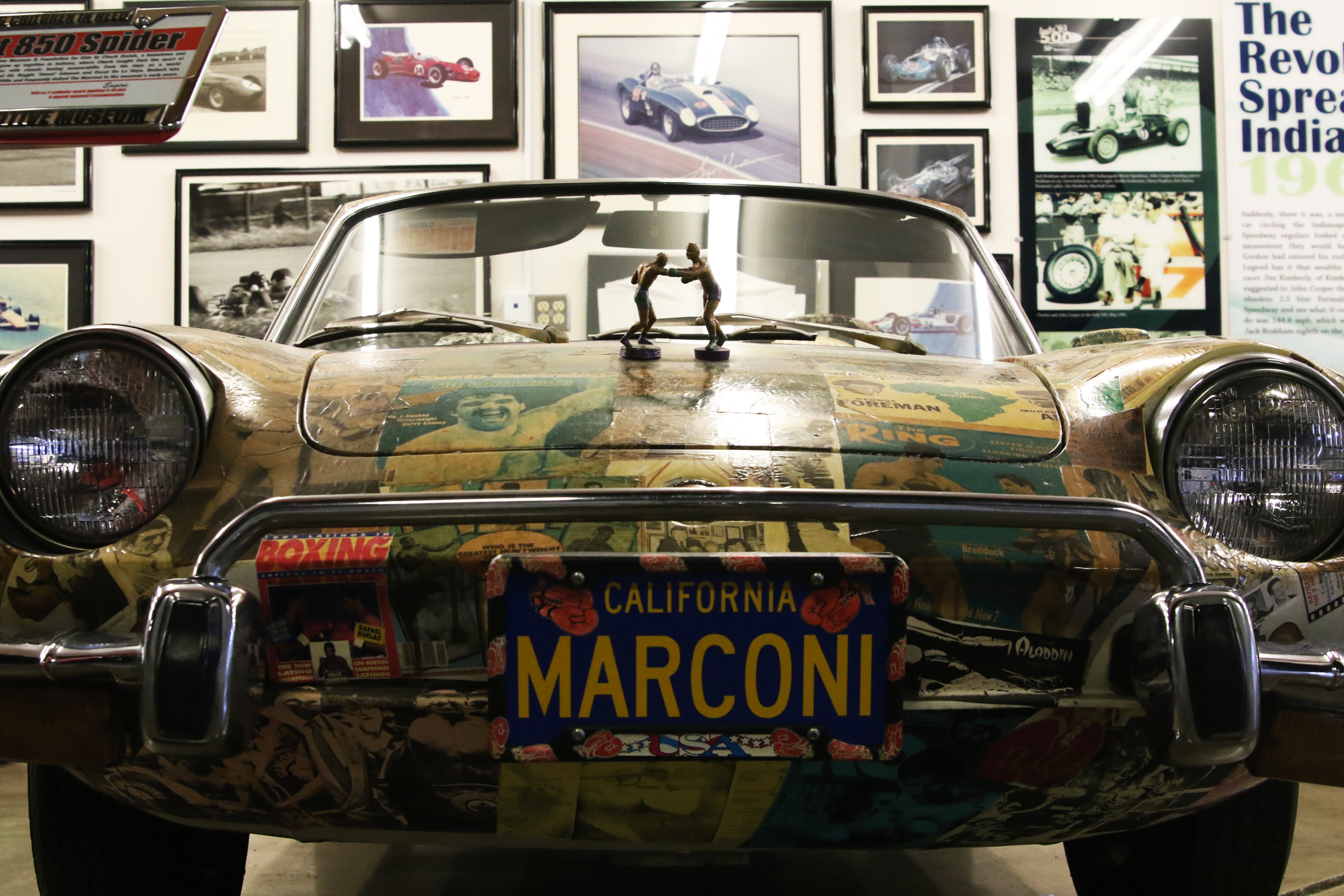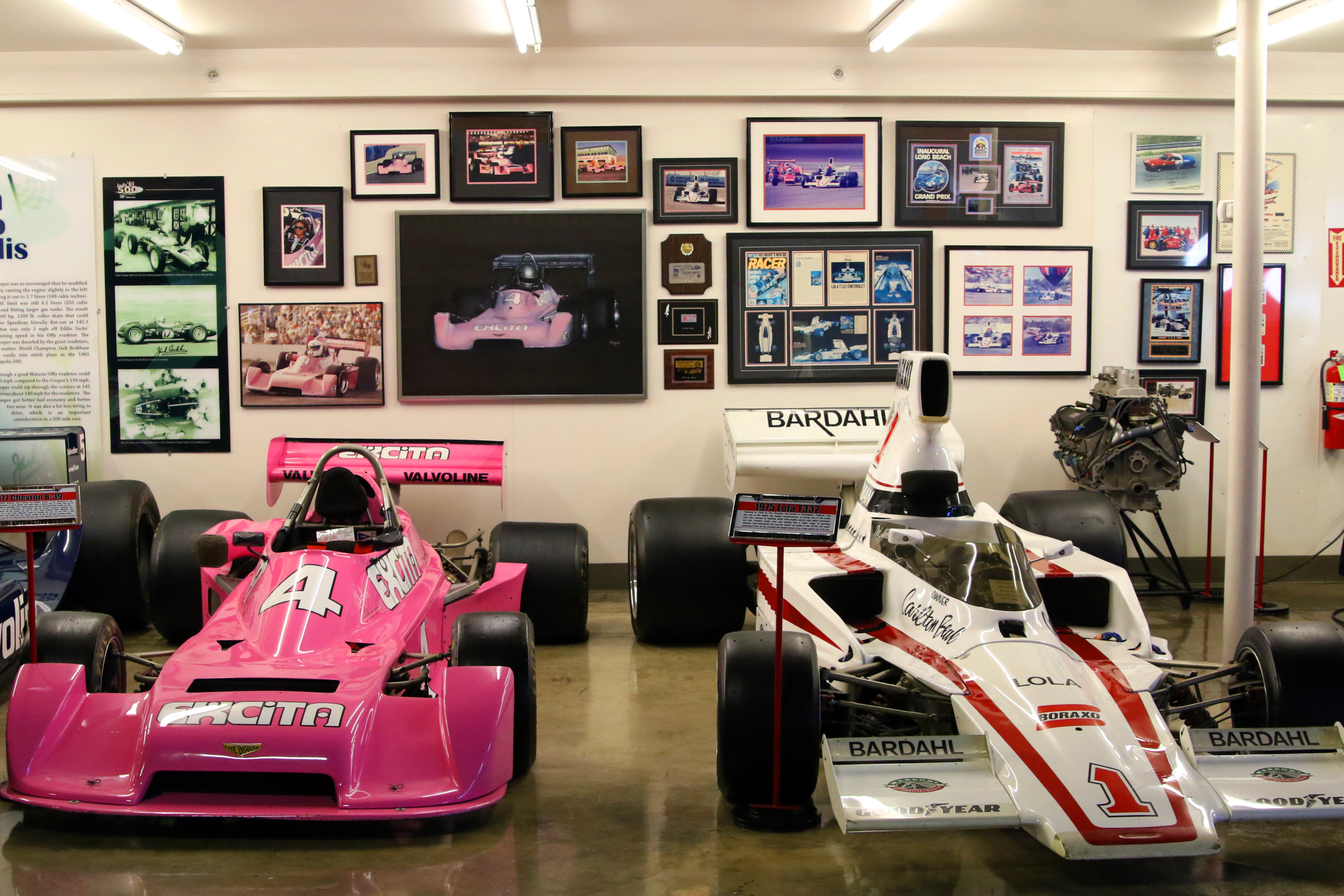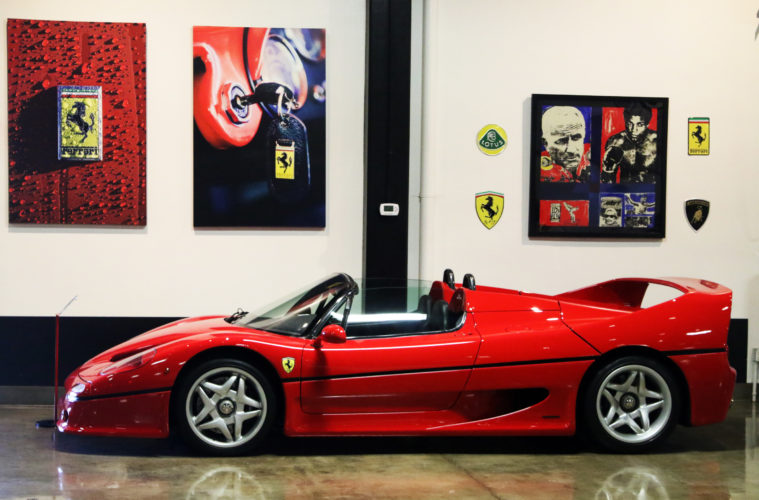It is often said that the only difference between men and boys is the price of their toys. In the case of Dick Marconi’s Automotive Museum in Tustin, the same toys have benefited both grown-ups and children. The museum is filled with luxury automobiles that once belonged to Marconi but now belong to the 501(c)(3) nonprofit Marconi Automotive Museum and Foundation that he established in 1994. He donated both the sizable building, at 1302 Industrial Drive, and the expansive collection of exotic autos. Visiting the museum is free, but a $5 donation is requested. Proceeds from the museum visitors – as well as proceeds from annual fundraisers held at the museum and rental fees for the building’s use for private events – benefit literally dozens of local children’s charities, especially those which help at-risk kids.

Photo by Scott Feinblatt
Marconi grew up in Gary, Indiana, where his steelworker father ingrained in him a strong work ethic. He used to box in Golden Glove tournaments to help pay for his education. After earning a MBA and studying pre-medicine he moved to Southern California, where he made the better part of his fortune. The museum’s marketing coordinator, Shannon Randol, briefly elaborated on how Marconi achieved his financial success. She said, “[After he went to college], he started creating vitamins for Herbalife.” Now, she pointed out, he is no longer in the Herbalife business – he is 85 and retired.
According to a leaflet at the museum, Marconi currently spends much of his free time painting; although he still drops in on the museum on occasion to give surprise tours to visitors. This is not surprising considering both the beautiful collection of more than 70 cars and his personal connection to each of the vehicles that are on display – many of which were raced by him, his wife or his son.
Wandering into the museum, the first thing guests will see is basically a hall of motorcycles. There is art on the walls and commemorative plaques bearing thank-yous from some of his youthful beneficiaries. The bikes range from Italian to American models and include a very impressive collection of motorcycles from Ducati, Buell, Bimota and BMW manufacturers. The Main Museum is 15,000 square feet and contains the bulk of the collection. In addition to the collection, which occupies much of the floor space, the walls are literally decked with cars, photos of the cars in races, and framed newspaper clippings.

1969 Fiat 850 Spider customized by Chuck Bodak – Photo by Scott Feinblatt
In front of every auto, there is a placard with the year, make and model as well as distinct attributes about each vehicle and anecdotes about it. Some of the stories are particularly amusing, such as that of the 1973 Ferrari 365 GTBS/4, which reads: “This vehicle was originally ordered from Ferrari by Sonny Bono as a gift for Cher. As the story goes, Sonny thought if he bought her a Ferrari she would leave Greg Allman and come back to him. Cher picked Greg, so Sonny never got the car and Dick purchased it.” The information goes on to identify the limited number of production models (122), its record speed of 180 mph, and the fact that it was dubbed “the best sports car in the world” by Road & Track magazine. As impressive as that sounds, it is literally just par for the course among the collection.
The pride and joy of the museum is a 1996 Ferrari FX, which was commissioned by the Sultan of Brunei. The Sultan had hired Paolo Pininfarina to design six one-of-a-kind Ferraris – this was number four, and “the only groundbreaking Ferrari to make it out of the jungle alive, making it one of the rarest and most interesting pieces of automotive history,” according to the placard. The Main Museum contains plenty of Ferraris, but there are several odds and ends scattered throughout, such as: A 1982 DeLorean DMC12, a 1954 Mercedes 300SL Gullwing, a 1965 Ford Shelby GT350, a 1989 Lamborghini Countach, a 1974 De Tomaso Pantera GTS, and even some oldies, like a 1927 Ford Model T and a 1929 Ford Model A (with a sticker price of $385).

1977 Chevron B-39 (left) and 1975 Lola T331 – Photo by Scott Feinblatt
In the next room, guests will find the 3,500 square foot Race Shop. More cars line the walls, the floor and an elevated platform with a second tier of display models. Once again, the placards both identify the vehicles and provide insightful history. One of the older models in the room is a 1930 Simplex Sprint Car, which was driven by two-time Indianapolis 500 and two-time USAC National Champion Rodger Ward. One of the more colorfully customized vehicles in the room is a 1969 Fiat 850 Spider, which was donated by Marconi’s hometown friend Chuck Bodak. Bodak had taught Marconi how to box, and the car is covered with decoupage of vintage boxing photos – a process which evidently took Bodak four years to complete. In the corner of the room are a couple of diminutive racers, called midget cars, and a display case with several volumes of classic car books and realistic scale model vignettes, including one which depicts a major collision in miniature scale.
The museum’s location, along an innocuous stretch of road, almost makes it seem like it’s a hidden treasure trove. The collection itself would be right at home in some grandiose museum in Las Vegas, however, the fact that Marconi wanted the collection to benefit at-risk children gives it a value that would suffer in such a setting. As it is, the museum provides a sense of awe for anyone who wishes to take in the sight, which, according to Randol, includes children on field trips, elderly folks on a retirement home day trips, and, of course, parties who rent the space. So, if you need a chic location for a business meeting, a baby shower, a quinceañera, a bar or bat mitzvah, etc., the Marconi Automotive Museum provides a luxurious environment, and your patronage will assist the foundation with Marconi’s ongoing legacy of helping children.
For museum hours and additional information, visit www.MarconiMuseum.org
Advertising disclosure: We may receive compensation for some of the links in our stories. Thank you for supporting Irvine Weekly and our advertisers.

